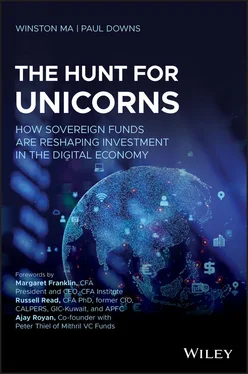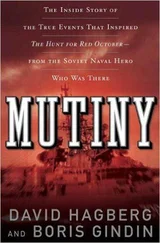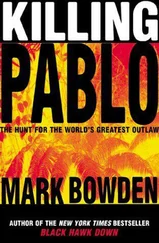Despite the nickname, the fund has also long been a leader in ESG principles. As an oil-based fund, that may seem odd. But there is a prudent rationale behind the bias. Norway's wealth is derived from oil and an intergenerational or budget stabilization fund has a mandate to mitigate the risk of that concentration. Looked at that way, the focus on sustainability makes for prudent investment management for a fund destined to support future generations even after the oil runs out.
ESG leadership and dedication to transparency nonetheless did not prevent an embarrassing misjudgment. The fund's retiring head failed to disclose his accepting a ride home from the United States in a private jet belonging to the hedge fund manager who was then a candidate to replace him. The succession remained in question for the scheduled September 1, 2020 start date over conflicts of interest. Living in a glass house is not easy.
But even this heightened Nordic obsession with transparency does not prevent some window dressing: also known as the Government Pension Fund of Norway, the fund name misleads with the inclusion of the term “pension,” since the fund has no obligations to any pensioners. But it apparently could not forgo the friendly, easily marketed, and non-threatening nature of the term. In practice, nonetheless, it is commonly called “the oil fund.”
Third, development funds.For a world economy frequently in and out of recession, this SIF group is expanding rapidly. Instead of prioritizing the fund's growth with international investments, development funds – like Irish Strategic Investment Fund (ISIF)or Russia's RDIF – focus on boosting a country's long-term productivity. They do so by investing in physical infrastructure (roads, railways, etc.), social infrastructure (education, healthcare, etc.), and, increasingly, digital infrastructure (telecom networks, data centers, etc.). They also promote strategic industries to diversify their domestic economies, often partnering with outside institutions (for example, peer SIFs) to attract foreign capital.
During the global financial crisis of 2008–2009, ISIF's core function was suspended, another example we see again and again when a crisis hits. The same fund was drafted in to play an out-of-character superhero role, as the bulk of the fund assets were morphed into the source of funding to bail out the Irish banking sector. Once it had saved the day and dropped off its pot of gold in the banks' coffers, it started to focus on economic development. By 2019, ISIF was credited for spurring over $3.5 billion inward investment into the Republic of Ireland through co-investments.
Also within the EU, Spainhas taken an interesting approach with its “cooperation” sovereign fund model. The Spain–Oman Private Equity Fund (SOPEF) was created in 2018 as a 50/50 venture of Oman's State General Reserve Fund (SGRF)and Spanish state entities Compania Espanola de Financiacional al Desarrollo (Cofides) and its Fund for Foreign Investment (FIEX). Each country contributed €100 million and they jointly selected a private sector PE manager to run the new fund.
The fund's focus is developmental: to support and enhance the overseas expansion of Spanish firms with a focus not only on Gulf countries but also on the wider region, including the Gulf, portions of Africa, India, and even Latin America. The arrangement contemplates investments in the €15 million range, with Oman the source of capital and Spain providing deal flow. Oman expects to benefit domestically, as well, from Spanish expertise in infrastructure, logistics, healthcare, and tourism. Later chapters will include more instances of this interesting “cooperation” fund trend in Europe, including France, Ireland, and Italy.
The “cooperation” trend has legs and is not unique to Europe. Indonesiaand the UAE have announced a $23 billion commitment by the UAE to invest in Indonesia. The investment is to be made through Indonesia's new sovereign fund (set to be launched in mid-2020) which is designed to support local startups and boost growth. Indonesia's fund is reportedly modelled on Singapore's sovereign funds, Temasek and GIC. Indonesia lacks the foreign reserves of Singapore; the UAE funding appears to overcome that impediment and should enable Indonesia to foster further its already vibrant startup market, on which both the Singapore giants have placed multiple large bets. Indonesia itself, and the UAE, will now be joining Temasek and GIC in the hunt for tech unicorns (private startups with $1 billion valuation) in the archipelago nation.
Some SIFs are both a global investor and a domestic development fund. For example, Mubadalahas a tech investment focus, maintaining offices in Silicon Valley and London; however, the stated objective of the fund is to “accelerate economic growth for the long-term benefit of Abu Dhabi.” This is achieved by simultaneously investing in domestic infrastructure and tech sectors, such as the innovation accelerator program Hub71 launched in early 2019. The Hub71 initiative includes both a fund of funds component as well as a direct investment portfolio, aiming to drive the economic development of Abu Dhabi and the Middle East by stimulating tech innovation. Chapter 5delves into Hub71 in detail.
In a context very different from the wealthy Gulf, Africa has been fertile ground for sovereign investment funds. There's the Rwanda Research and Innovation Fund which targets startups, for example, but more common are resource-based funds. In addition to multiple oil-based funds (including Angola, Gabon, Ghana, Nigeria, Mauritania, and Uganda), there's a diamonds-based fund ( Botswana's Pula Fund) and a minerals-based fund ( Namibia's Minerals Development Fund). More on these emerging funds in Chapter 5, which share the common policy objective to promote their respective economic development.
In Africa, the Kenya and Nigeria sovereign wealth funds are interesting case studies. The government of Kenyaintroduced legislation in early 2019 to establish a sovereign wealth fund – apparently as a result of the discovery of significant oil fields in 2012. The aim of the legislation is to create a sovereign wealth fund to ensure effective management of the proceeds from oil and other mineral exports. It is early days for the Kenya oil sector and the future of the proposal remains to be seen. Its appearance, nonetheless, reinforces the trend in sub-Saharan Africa – so evident elsewhere – to create sovereign funds to manage resource windfalls and diversify the economy.
Nigeriais the largest economy in Africa, and the Nigerian Sovereign Investment Authority (NSIA), established in 2011, is favorably cited by the IMF as seeking to comply with the Santiago Principles on transparency, good governance, accountability, and prudent investment practices. NSIA consists of three separate, ring-fenced funds representing the three different functions of savings, stabilization, and development (see Figure 1.2 ), namely: (a) the Fiscal Stabilization Fund, to provide relief to the economy in times of financial stress; (b) the Future Generations Fund, which undertakes growth investments; and (c) the Nigeria Infrastructure Fund, which undertakes investment in domestic infrastructure projects.

Figure 1.2 NSIA Divided into three Ring-fenced Sub-Funds
Finally, the public pension funds (PPFs).As illustrated by the name of the Norwegian fund, the term “pension” could mean multiple things. There are mainly two types of PPFs. For one, pension reserve funds, which can be understood as pension-fund-type sovereign wealth funds. These funds, such as Australia's Future Fund, the New Zealand Superannuation Fund (NZ super), and Chile's Pension Reserve Fund, typically invest budget surpluses in global markets to help defray their sponsoring government's future pension obligations.
Читать дальше













